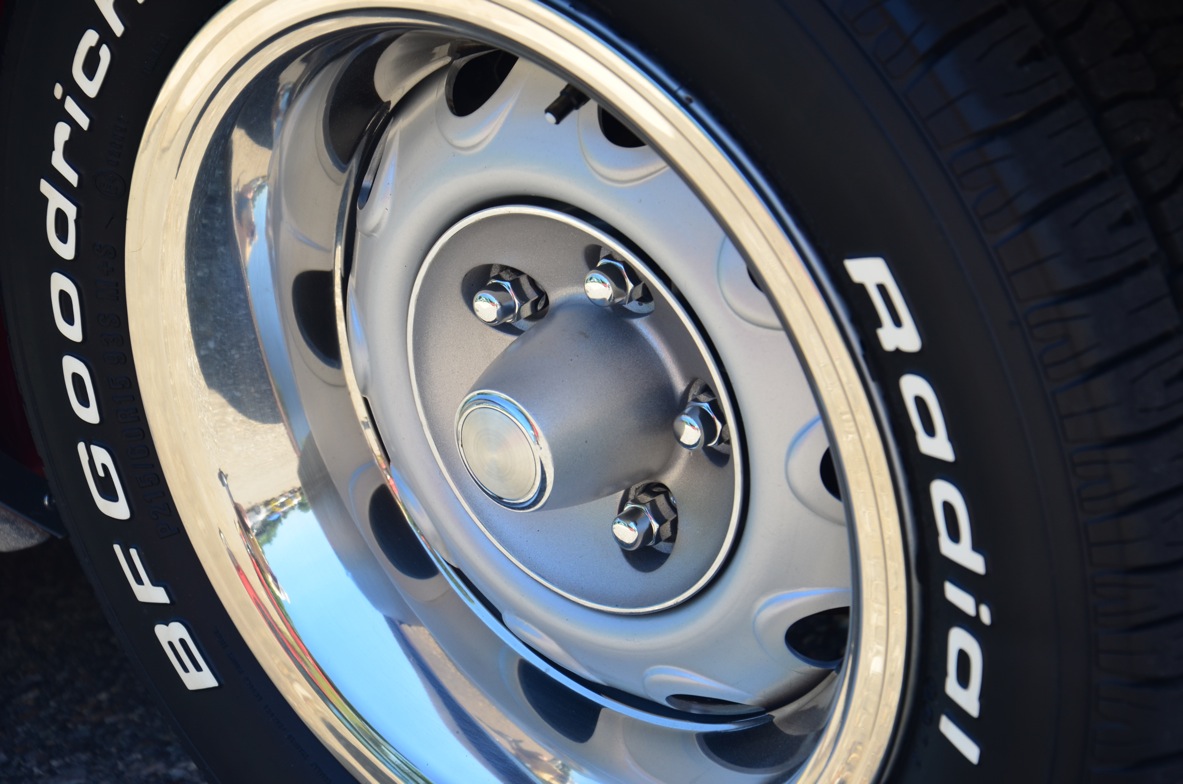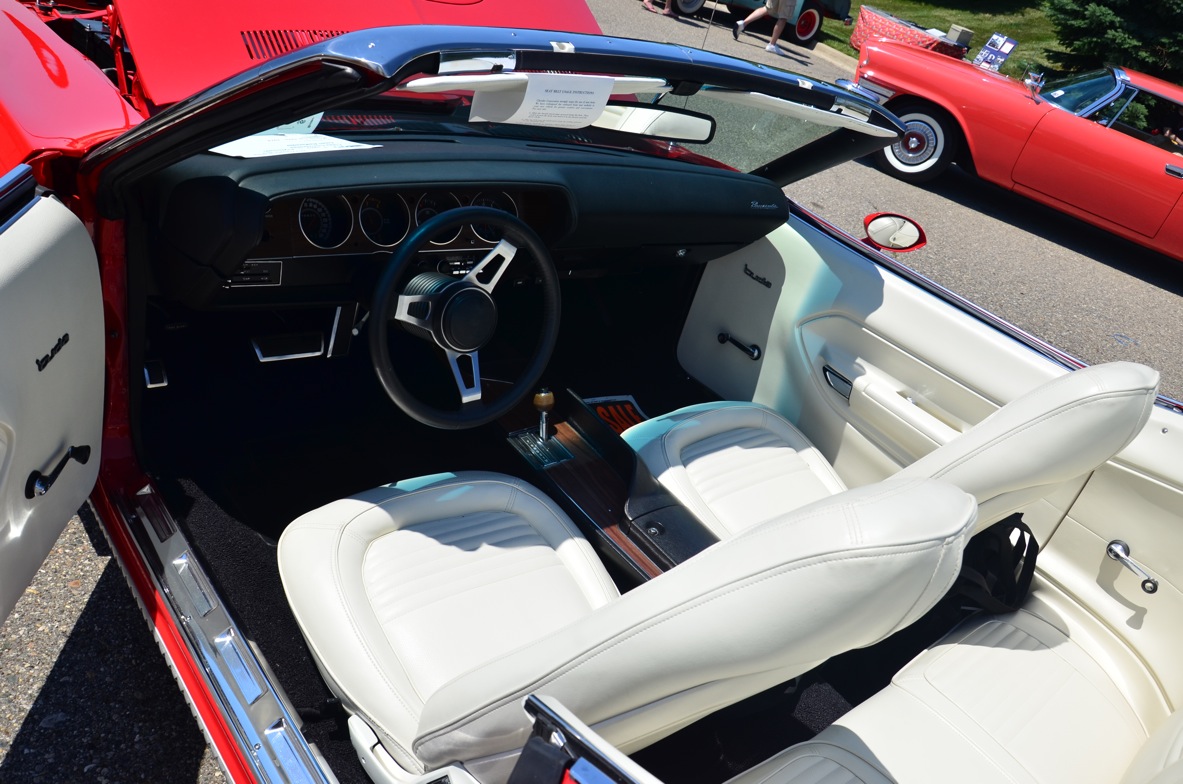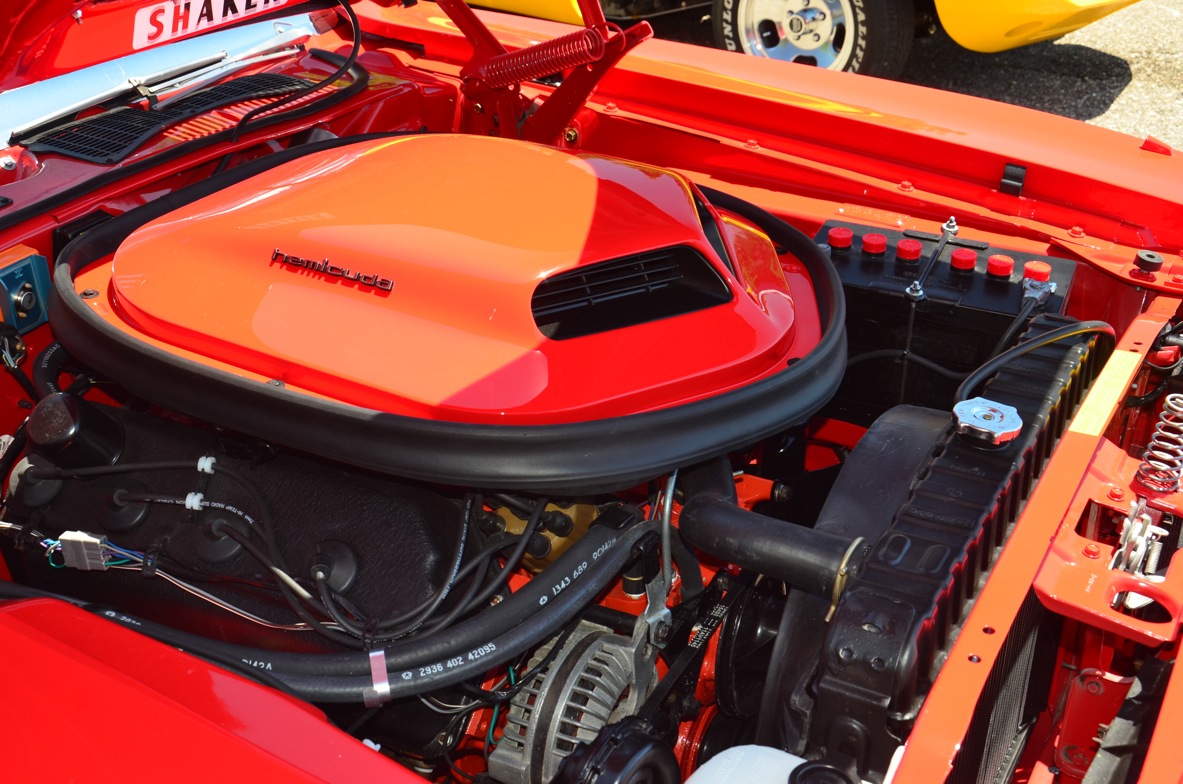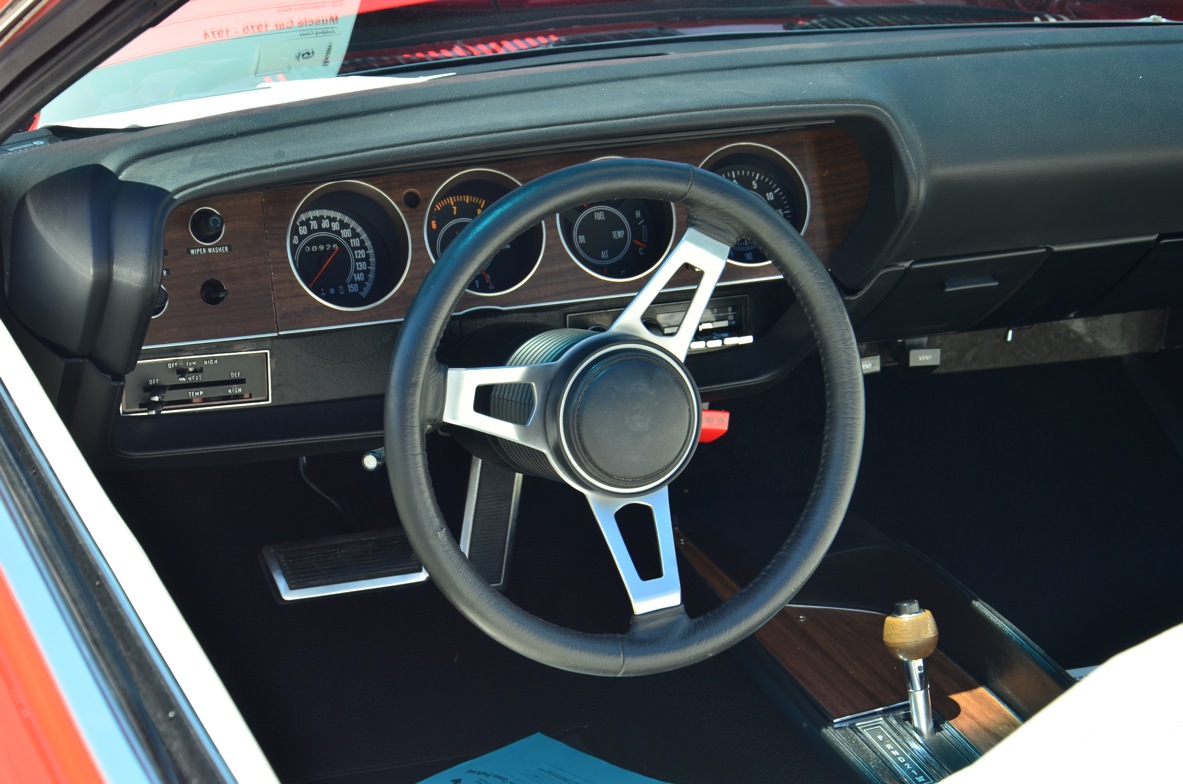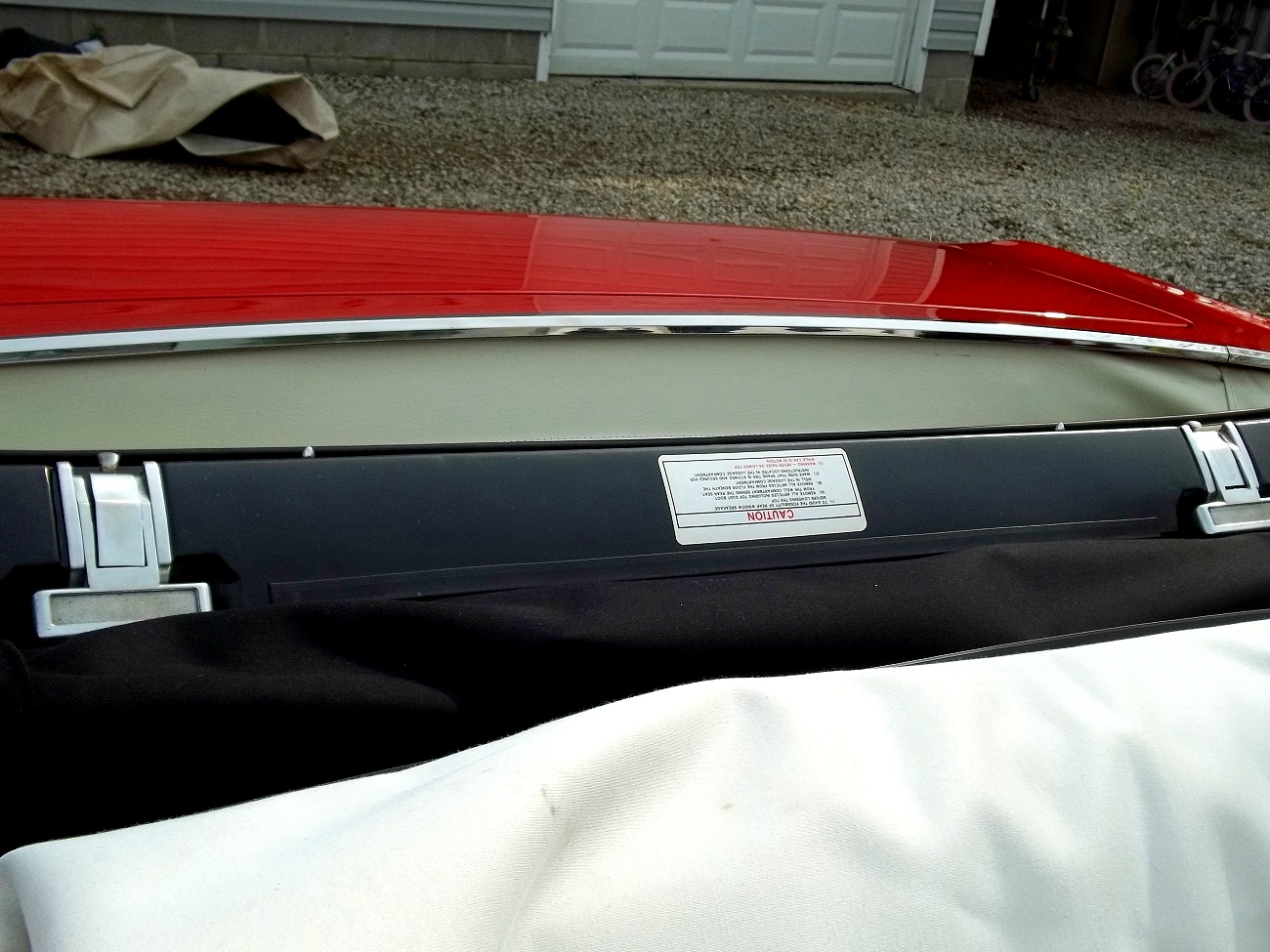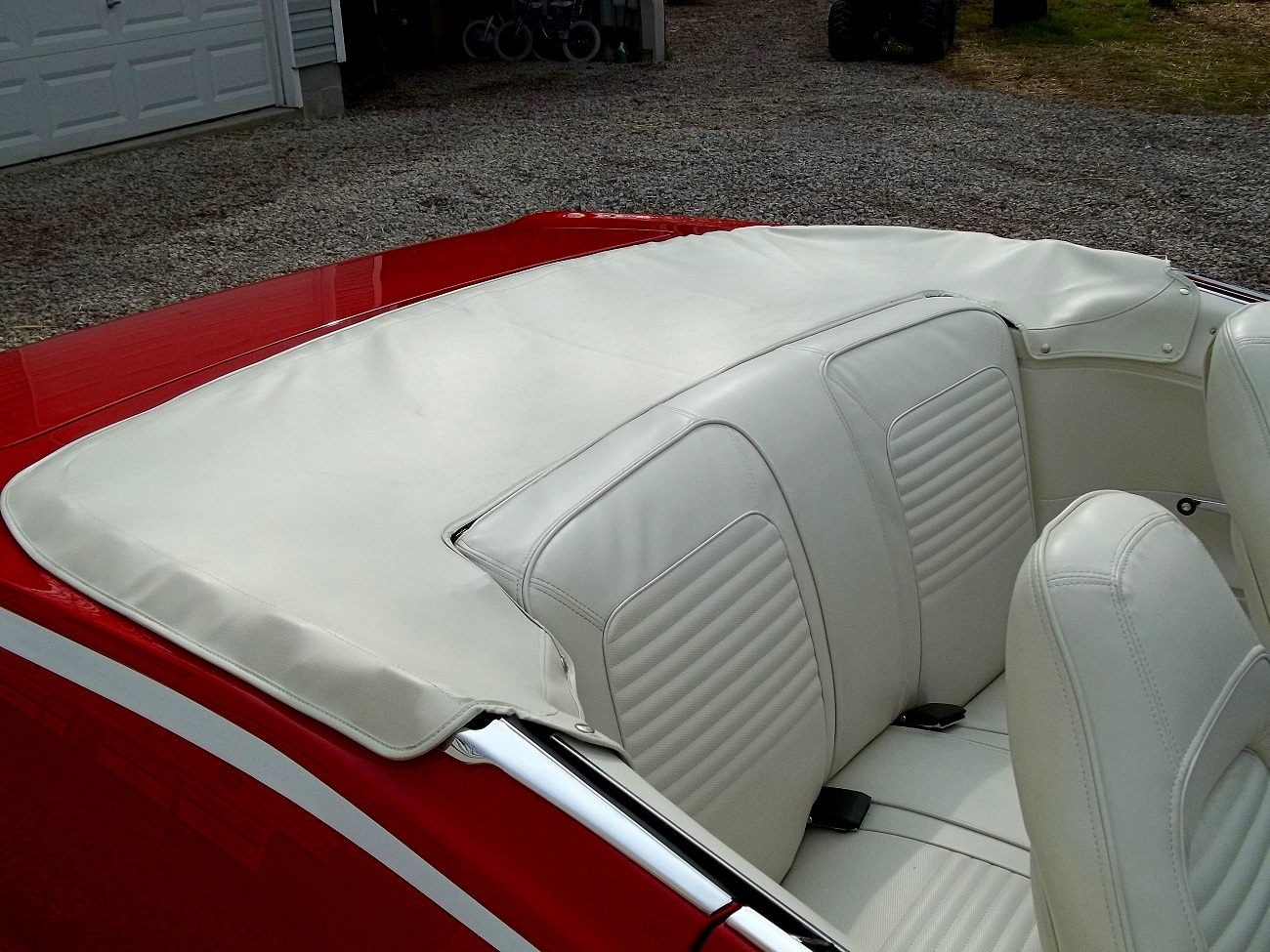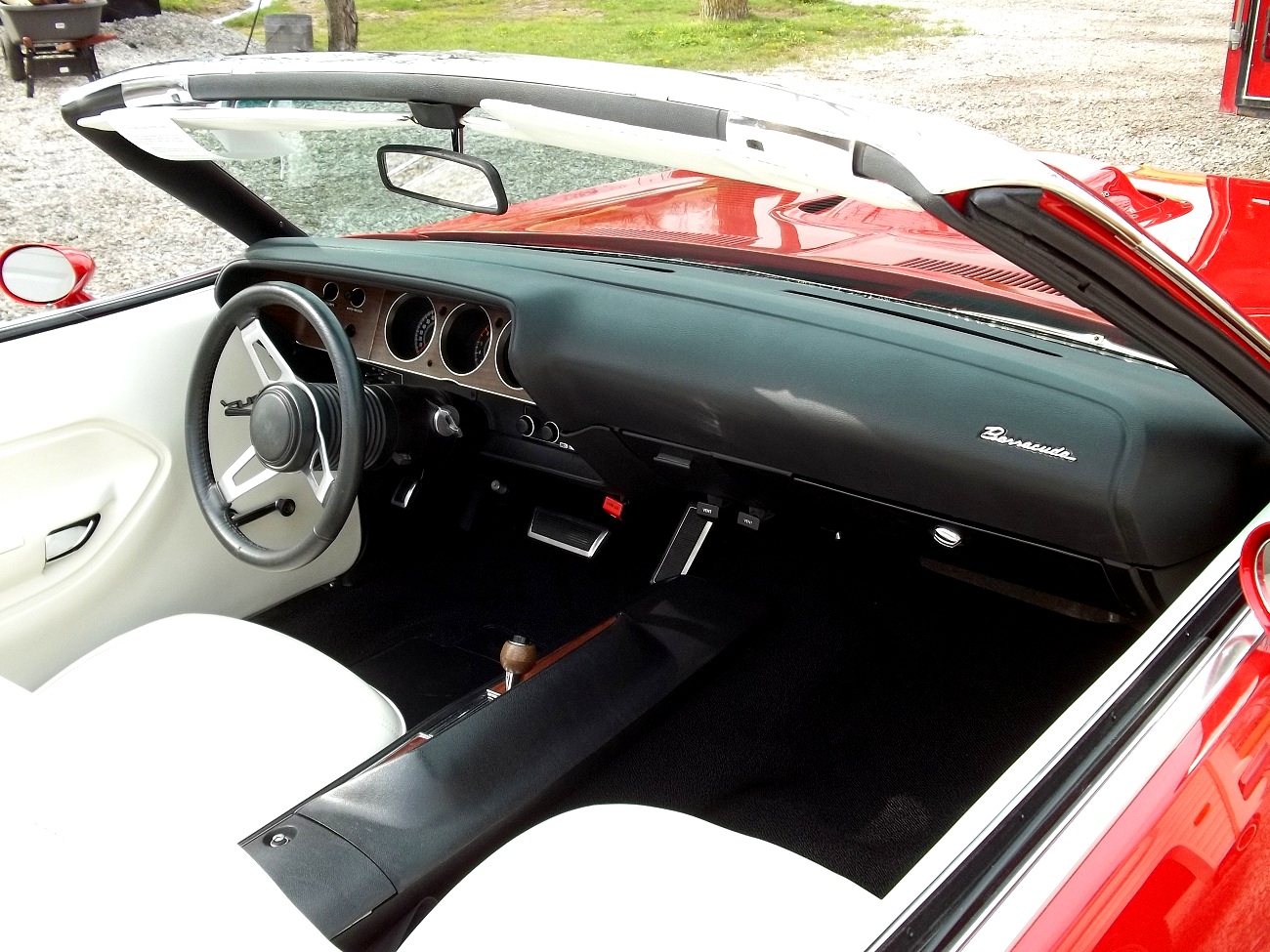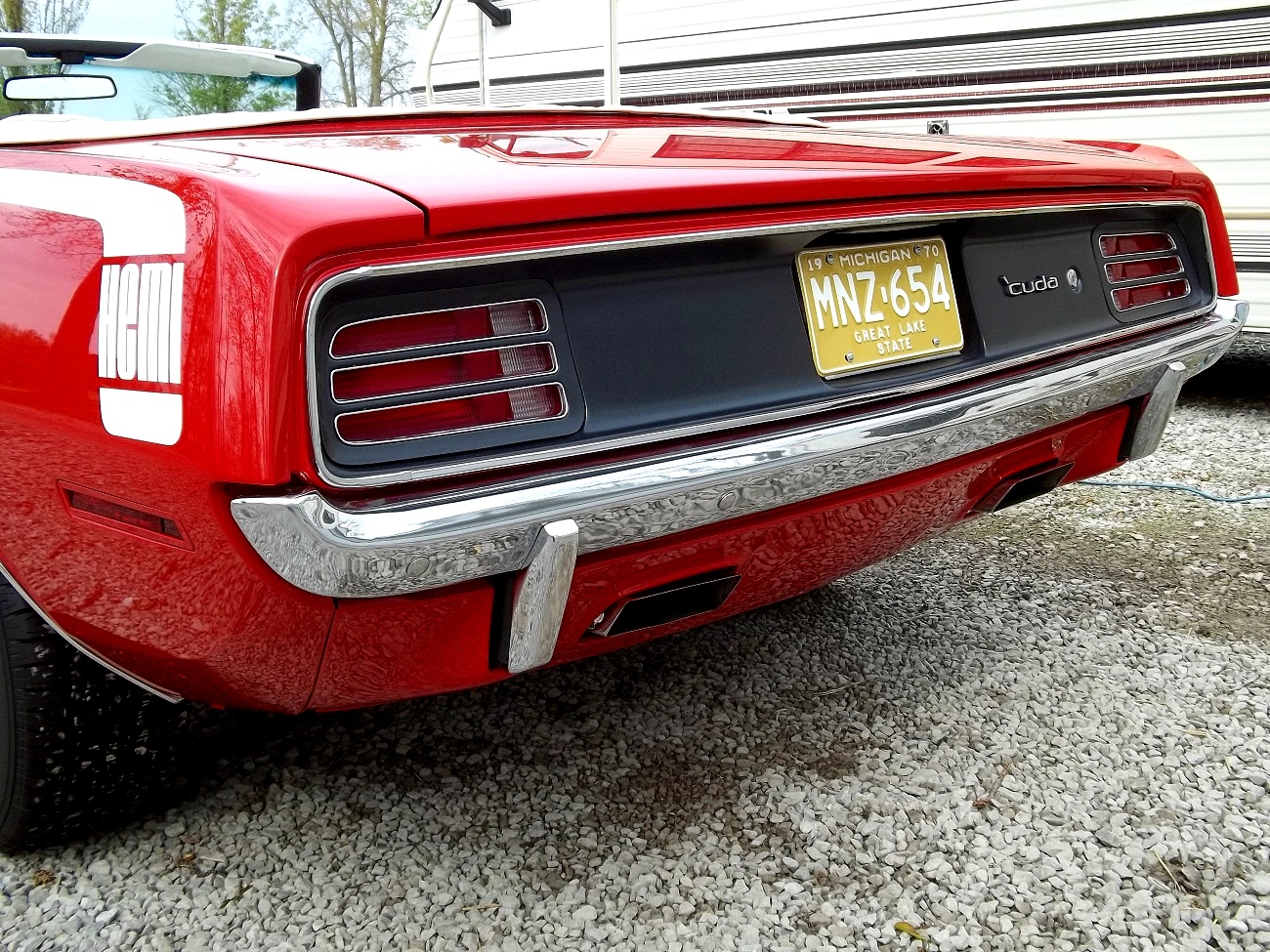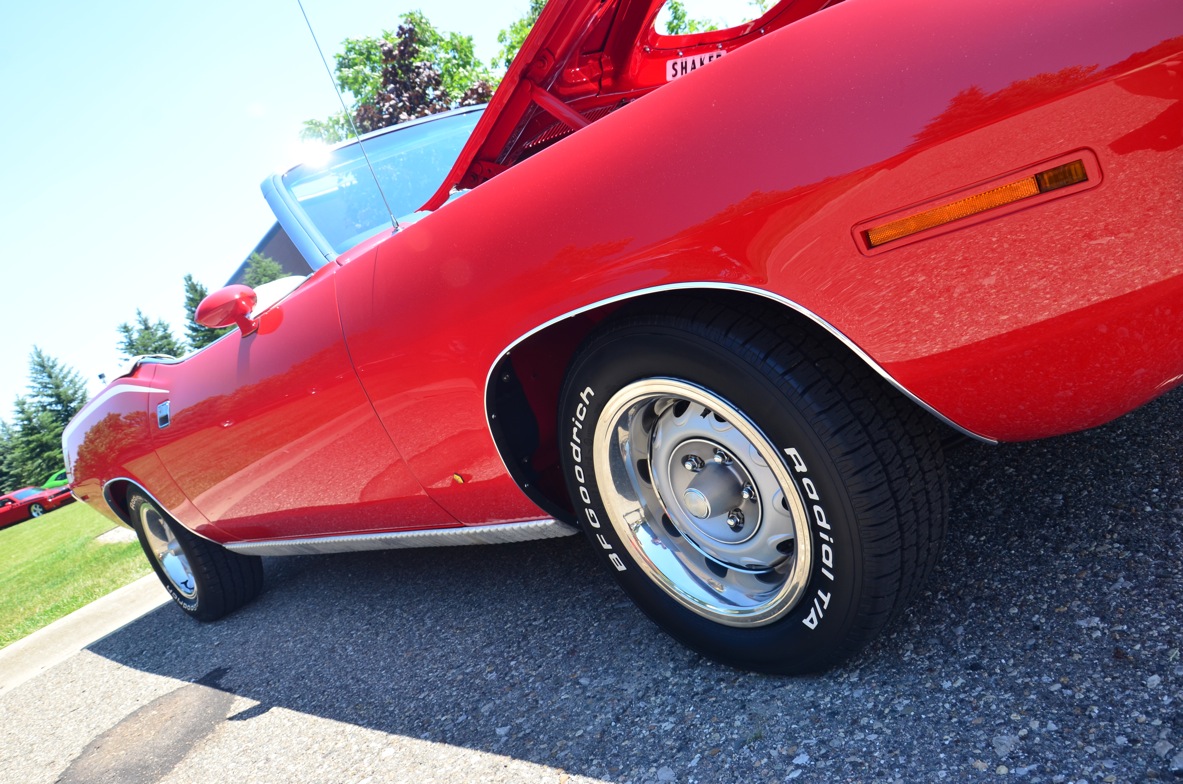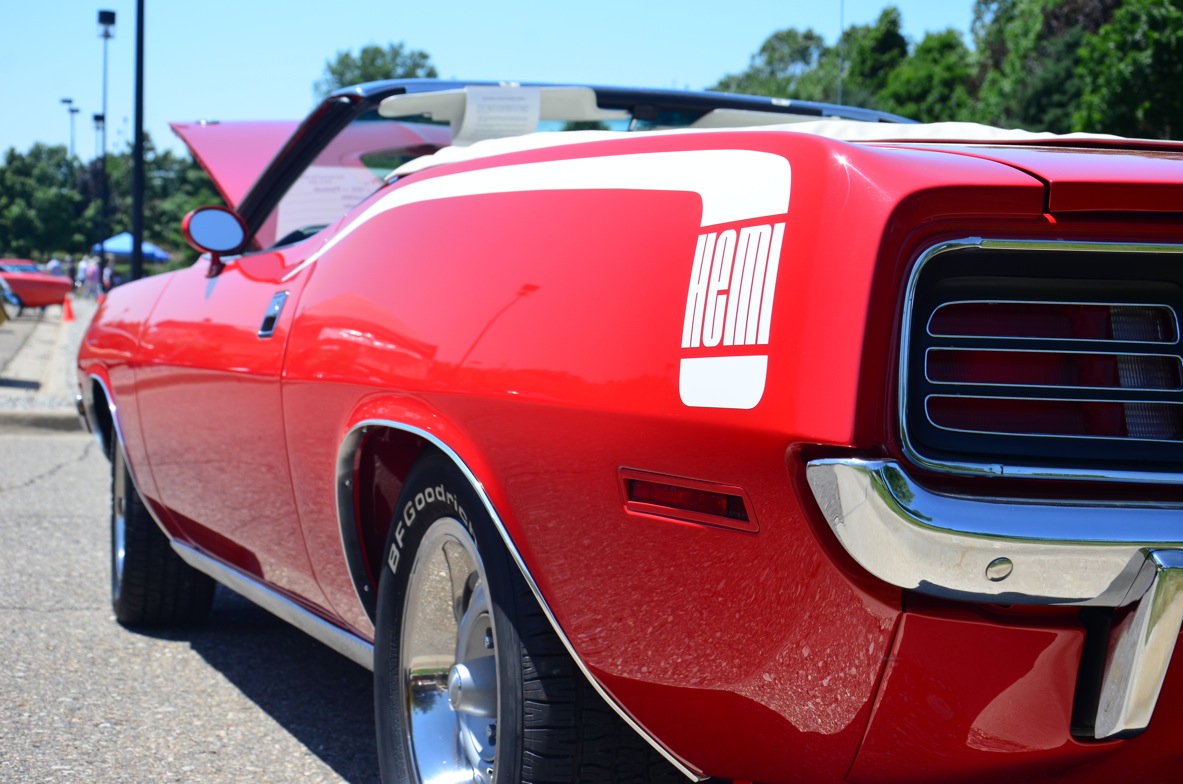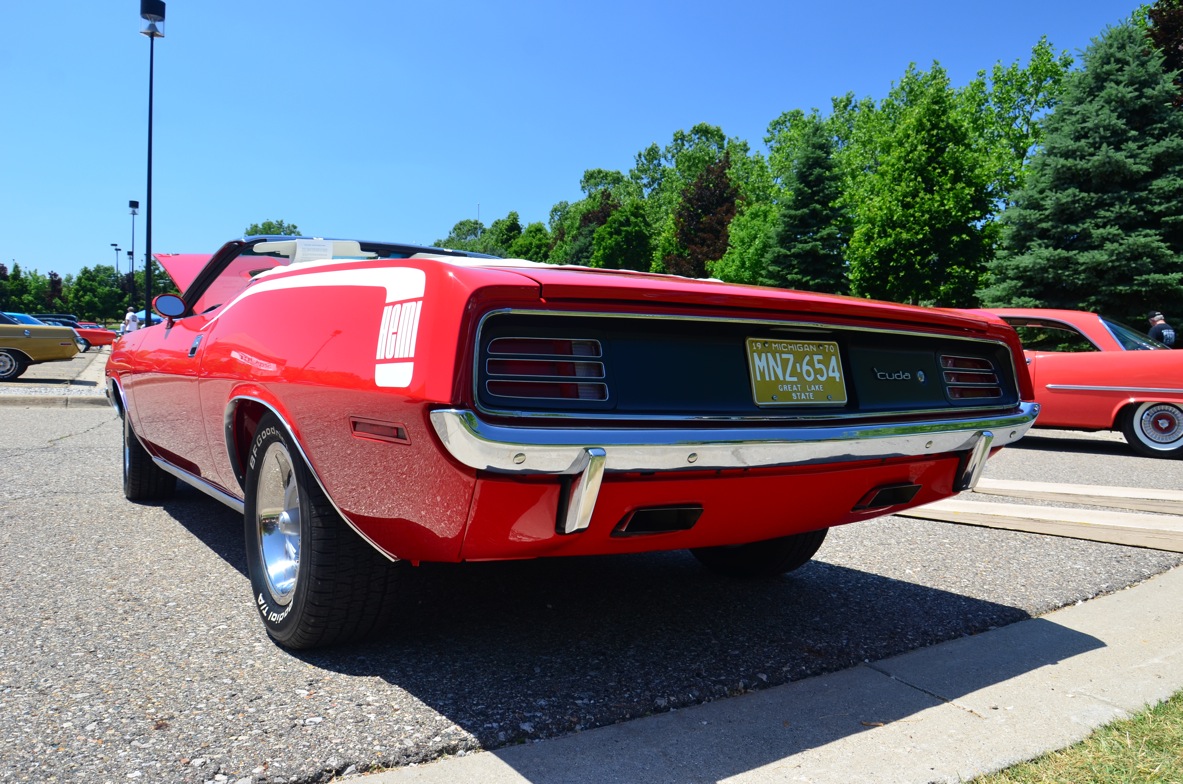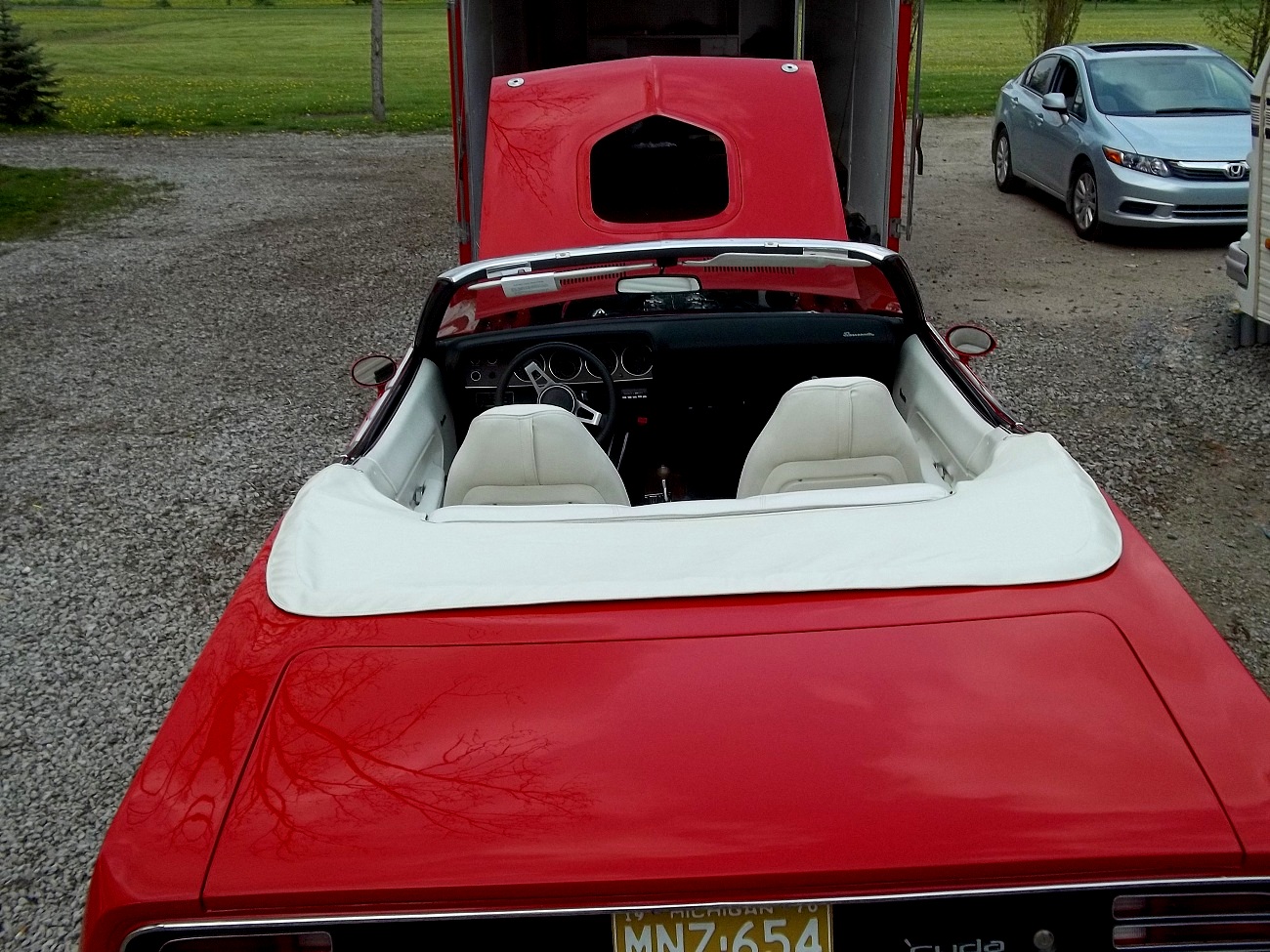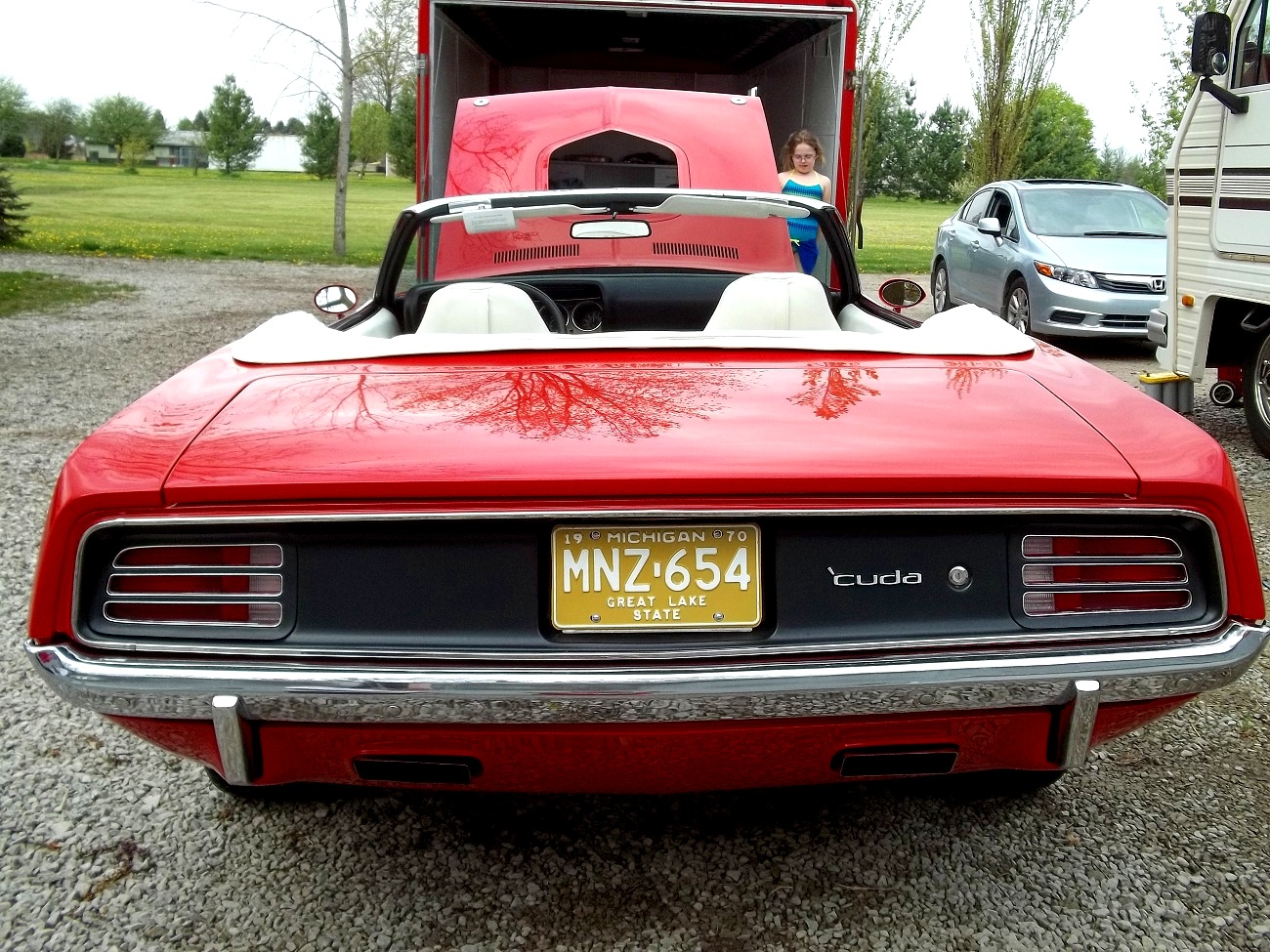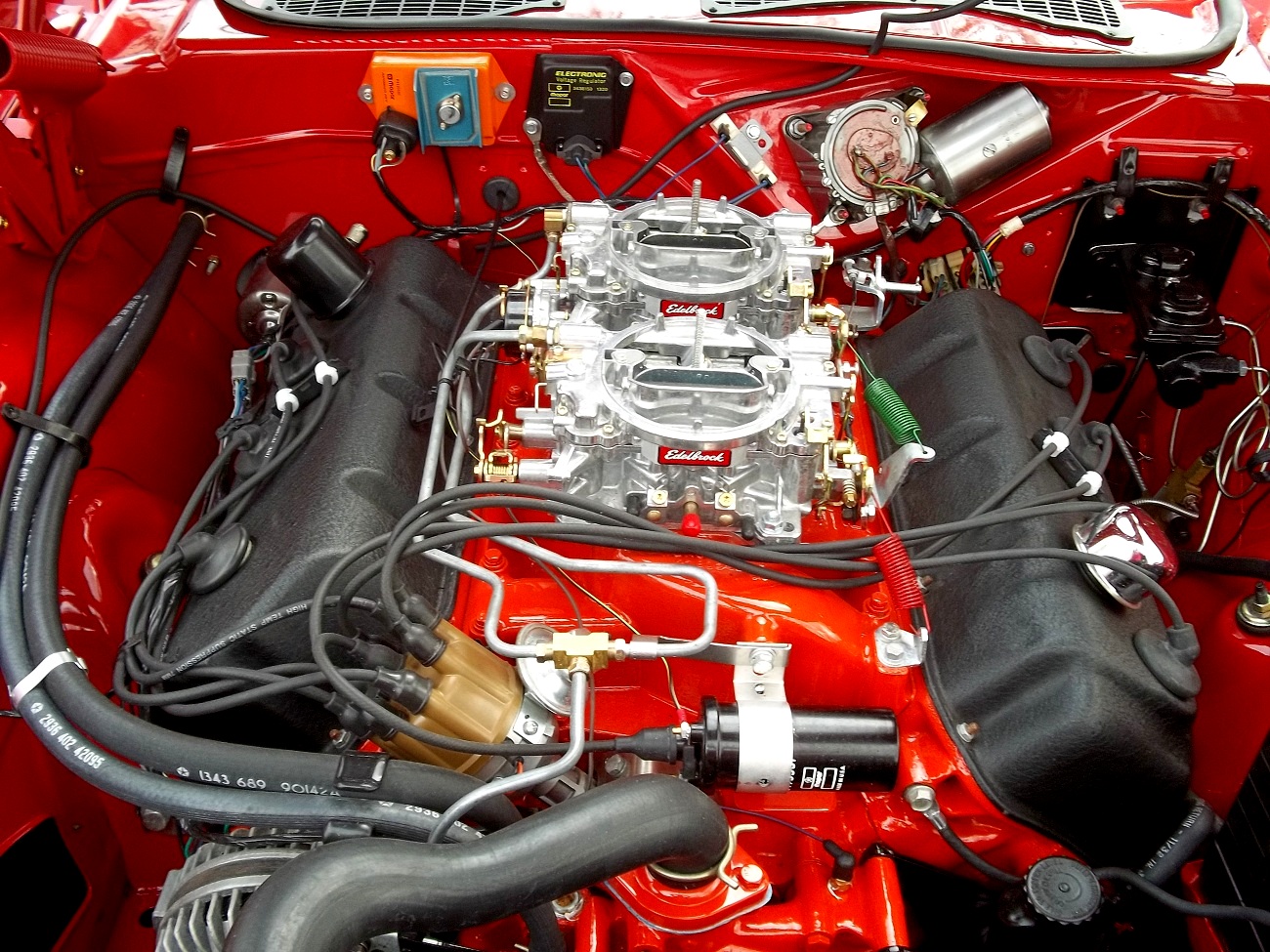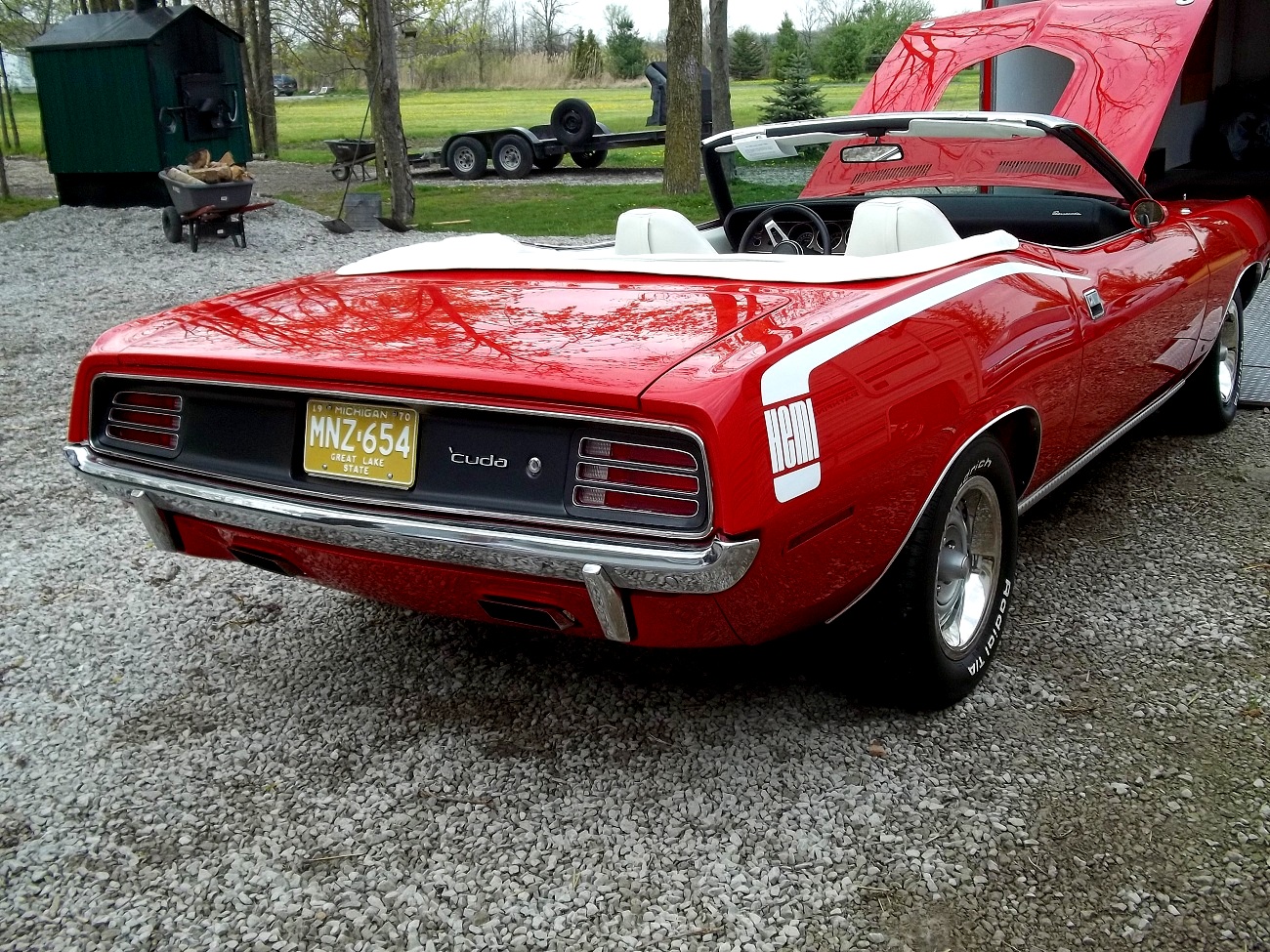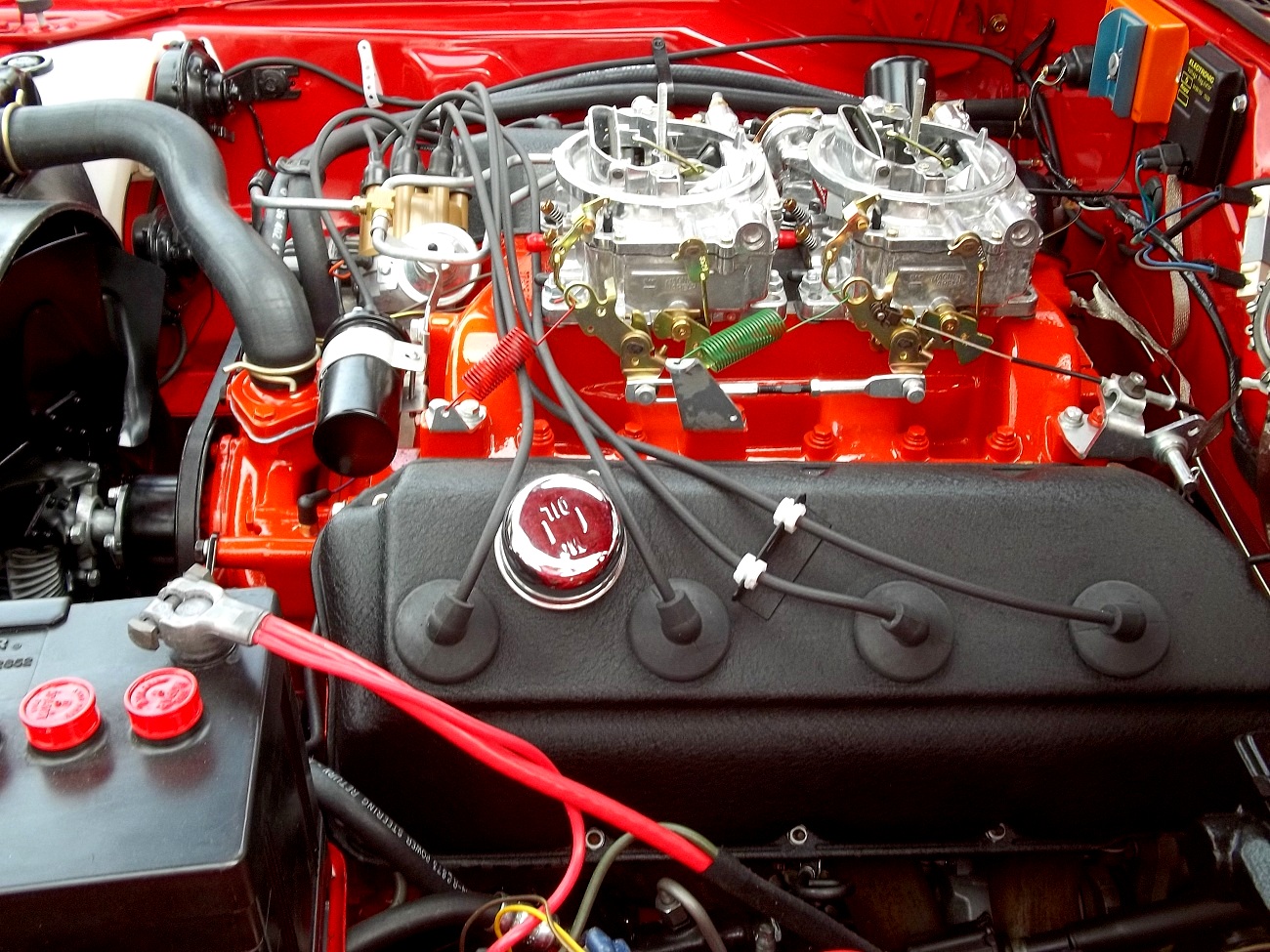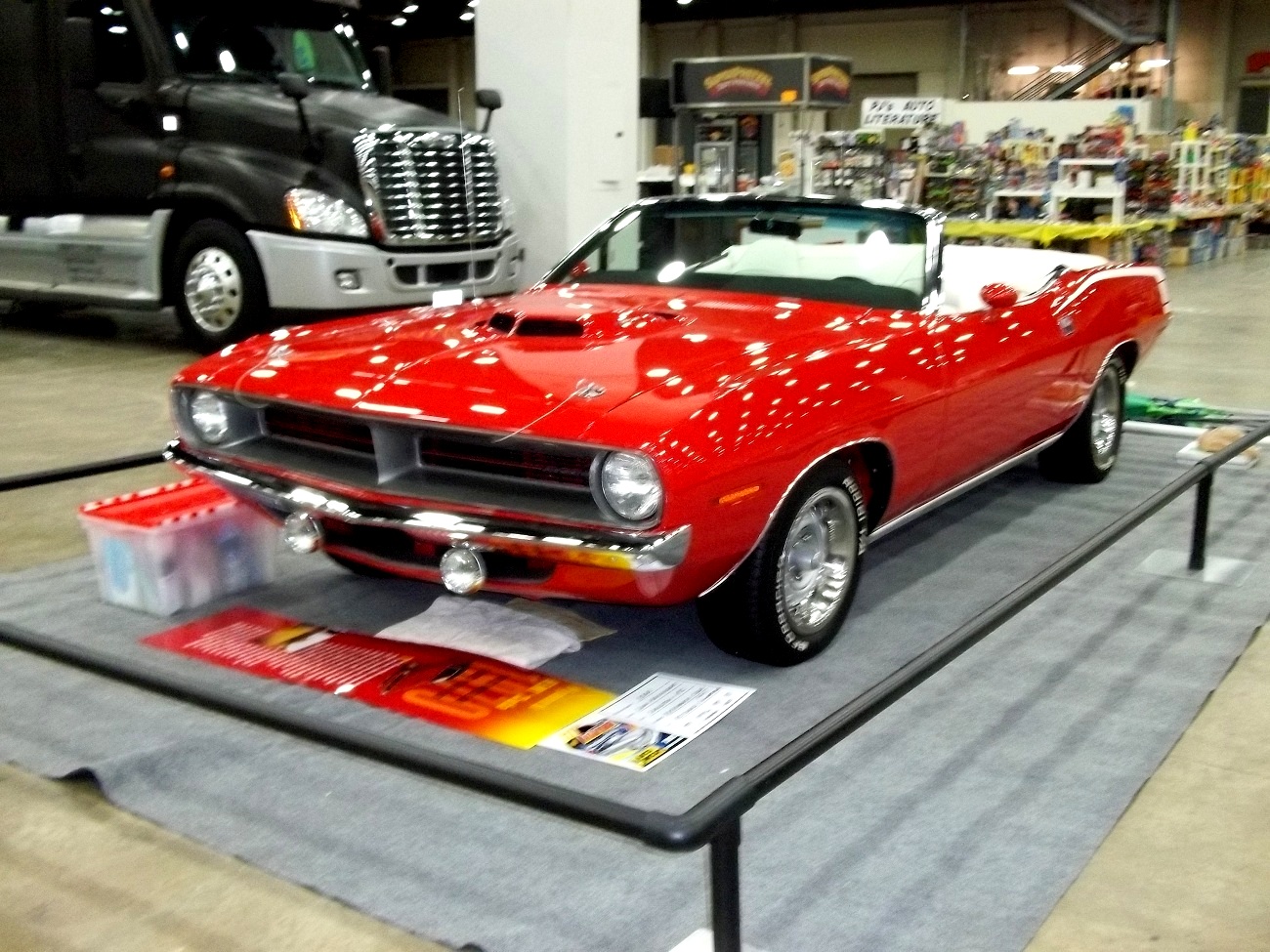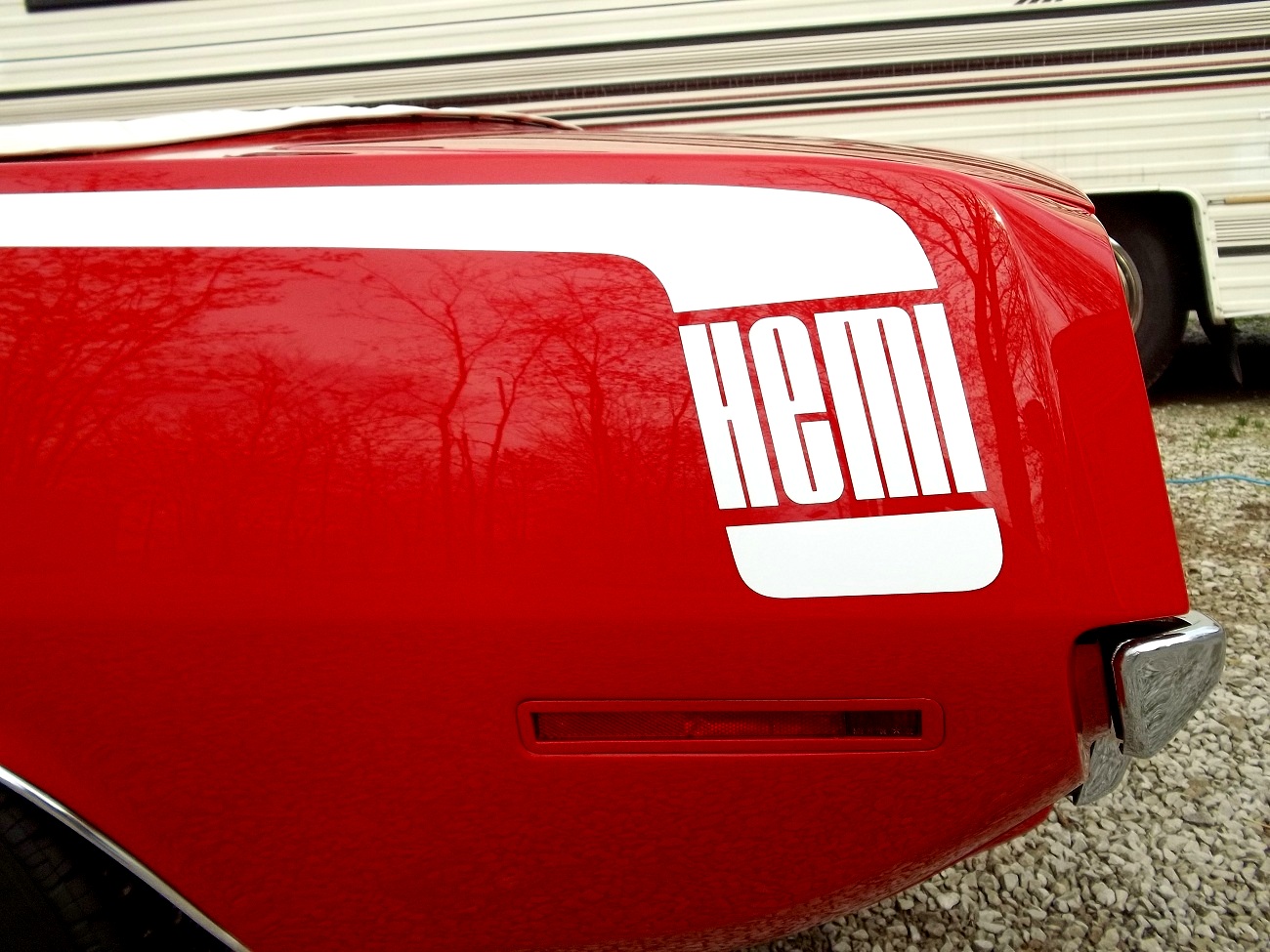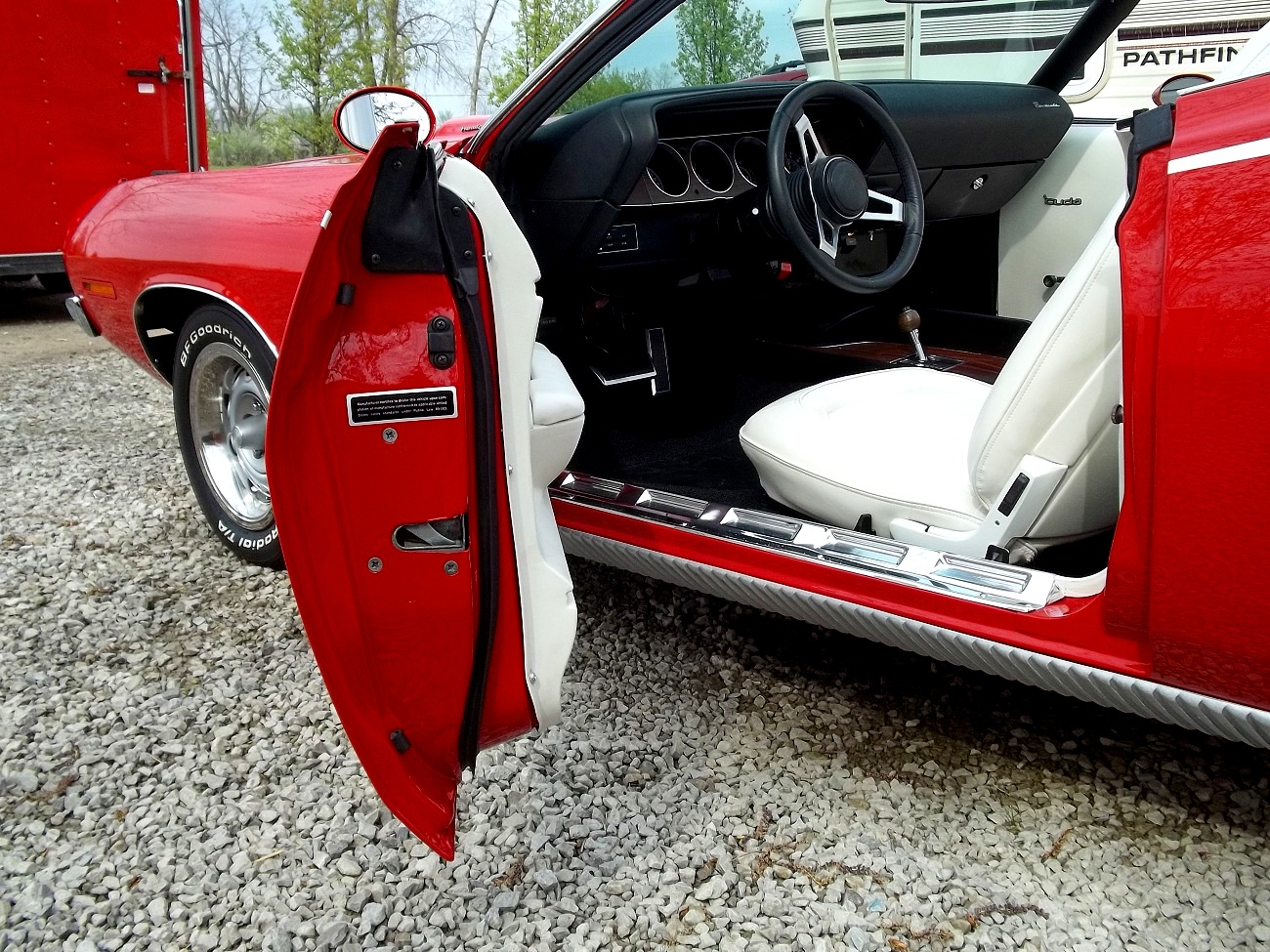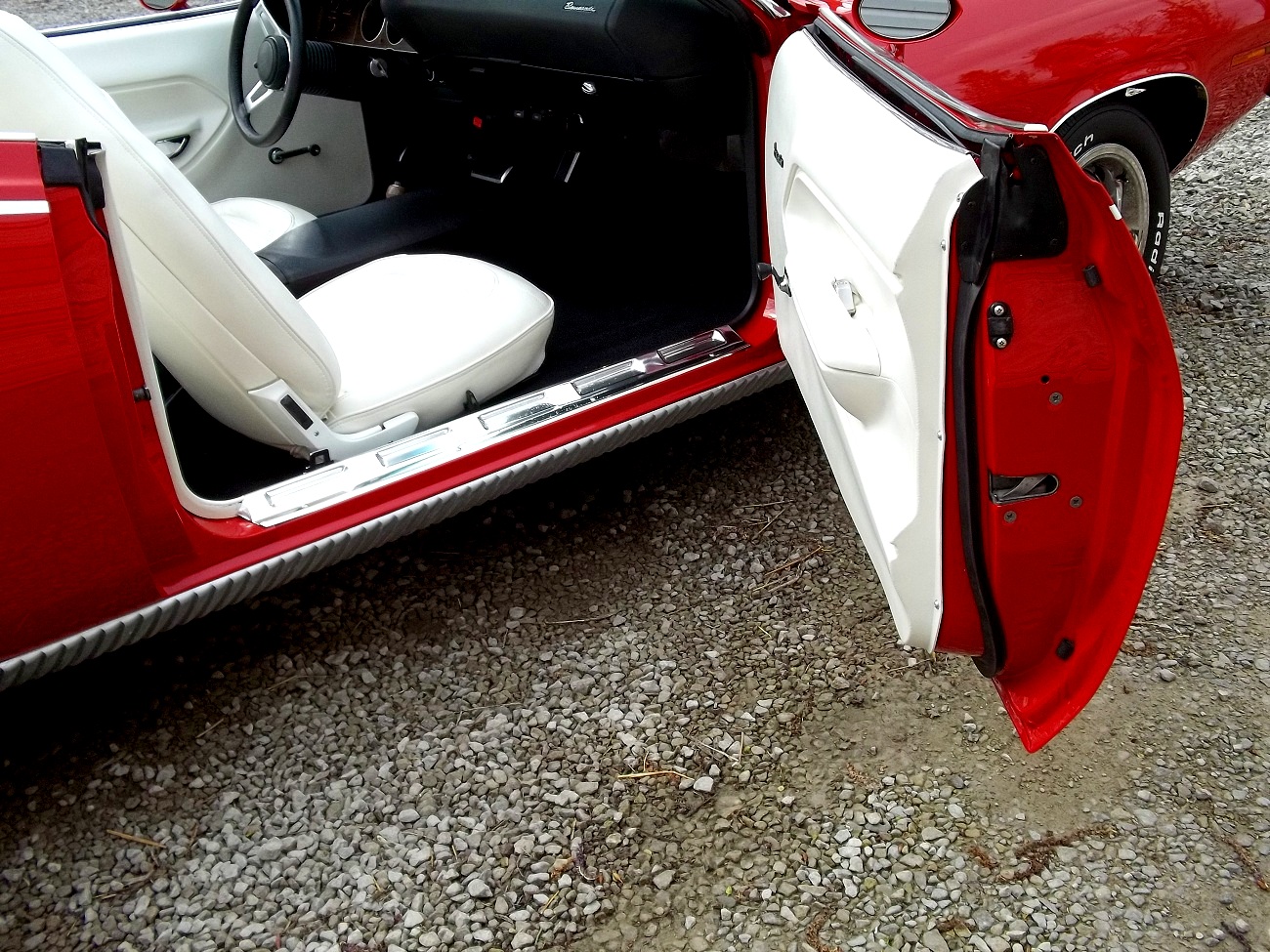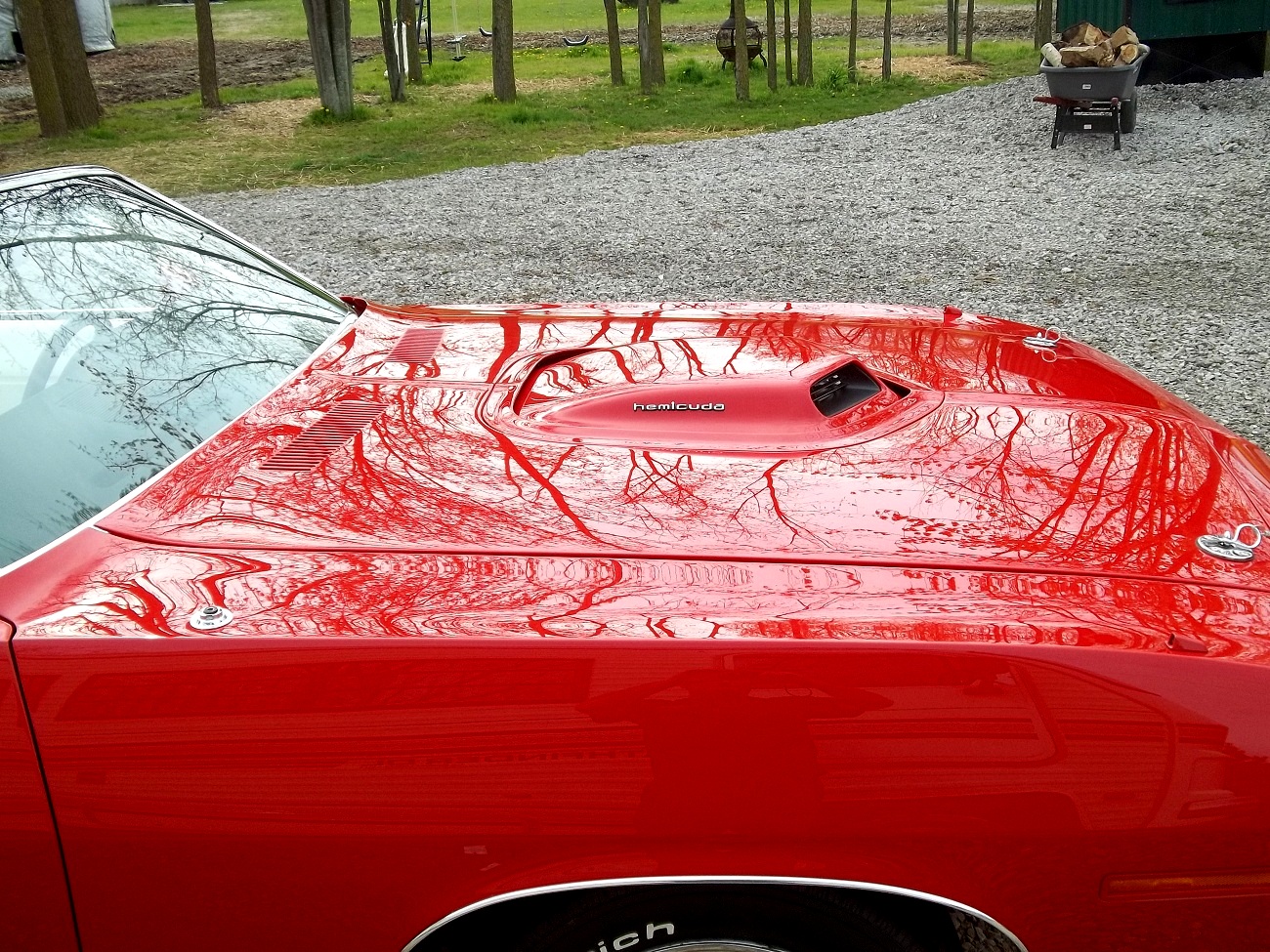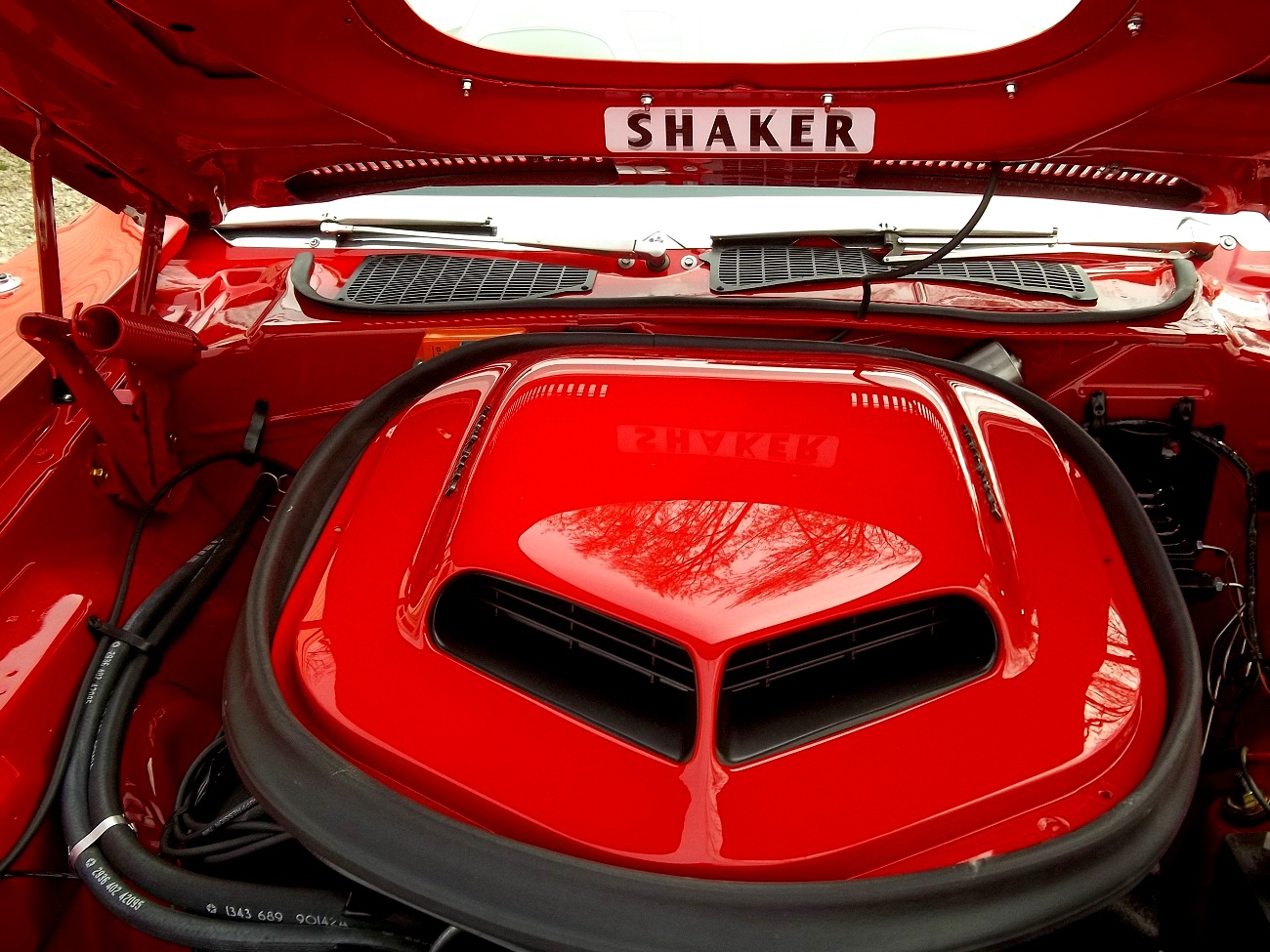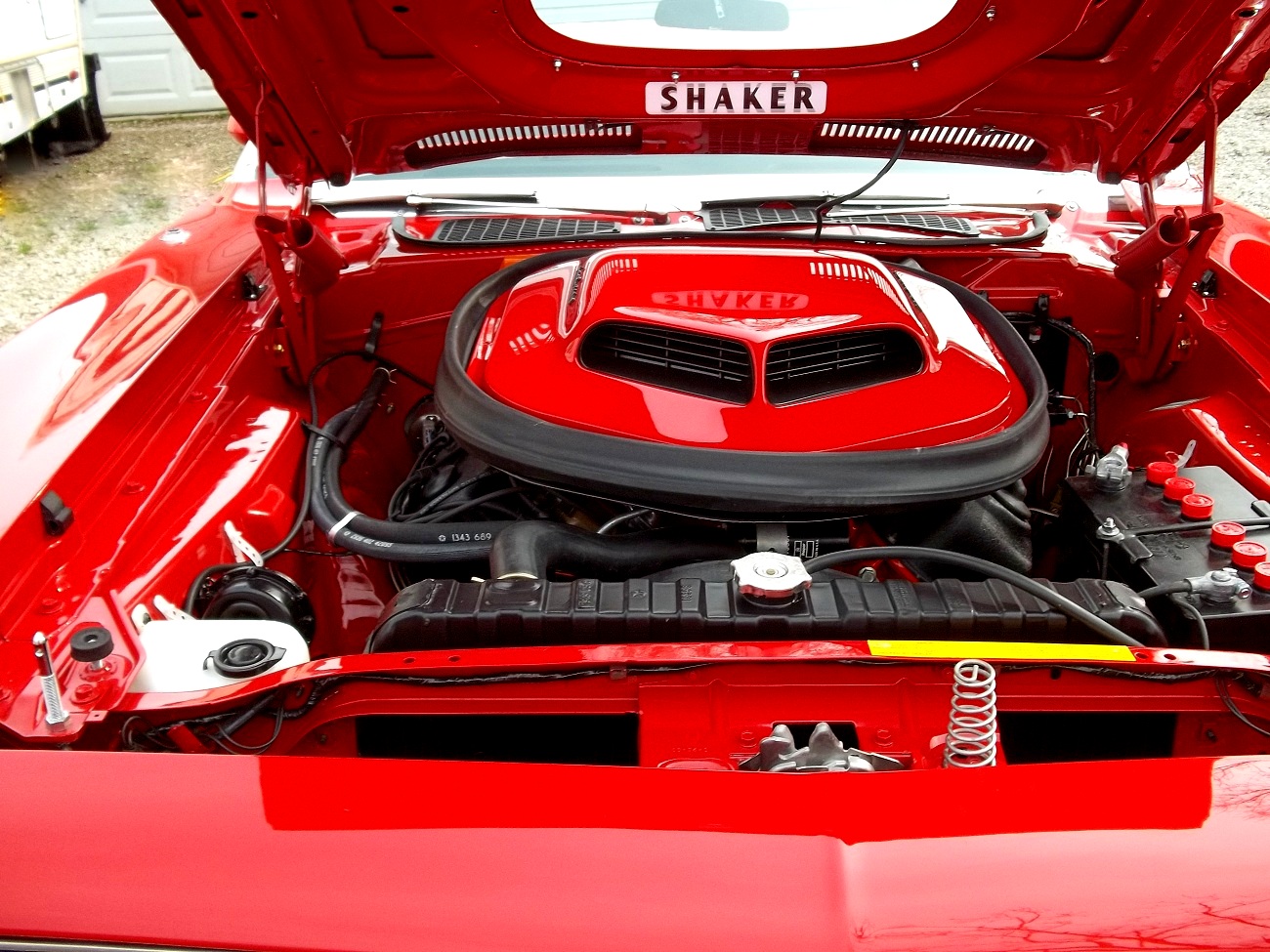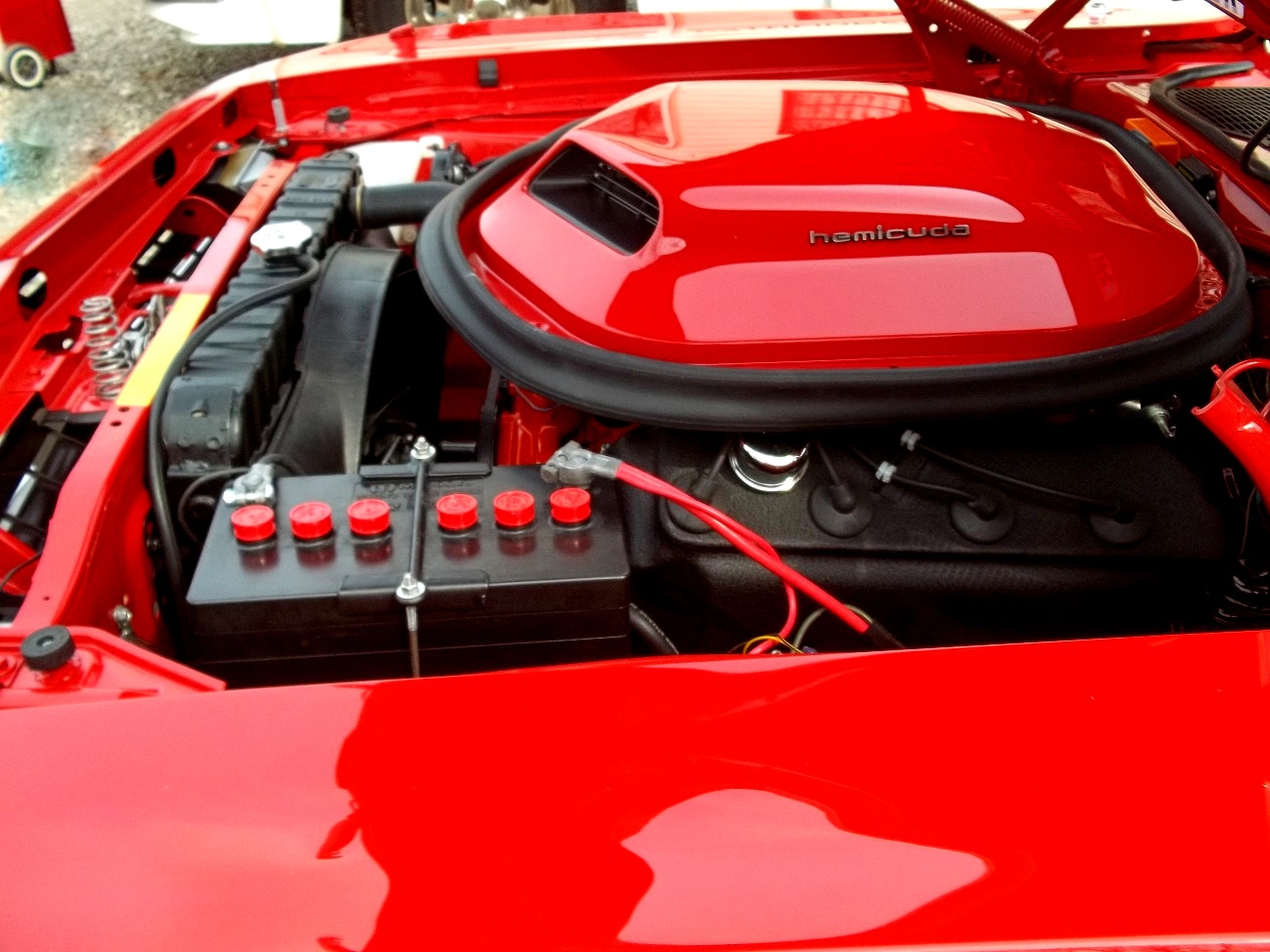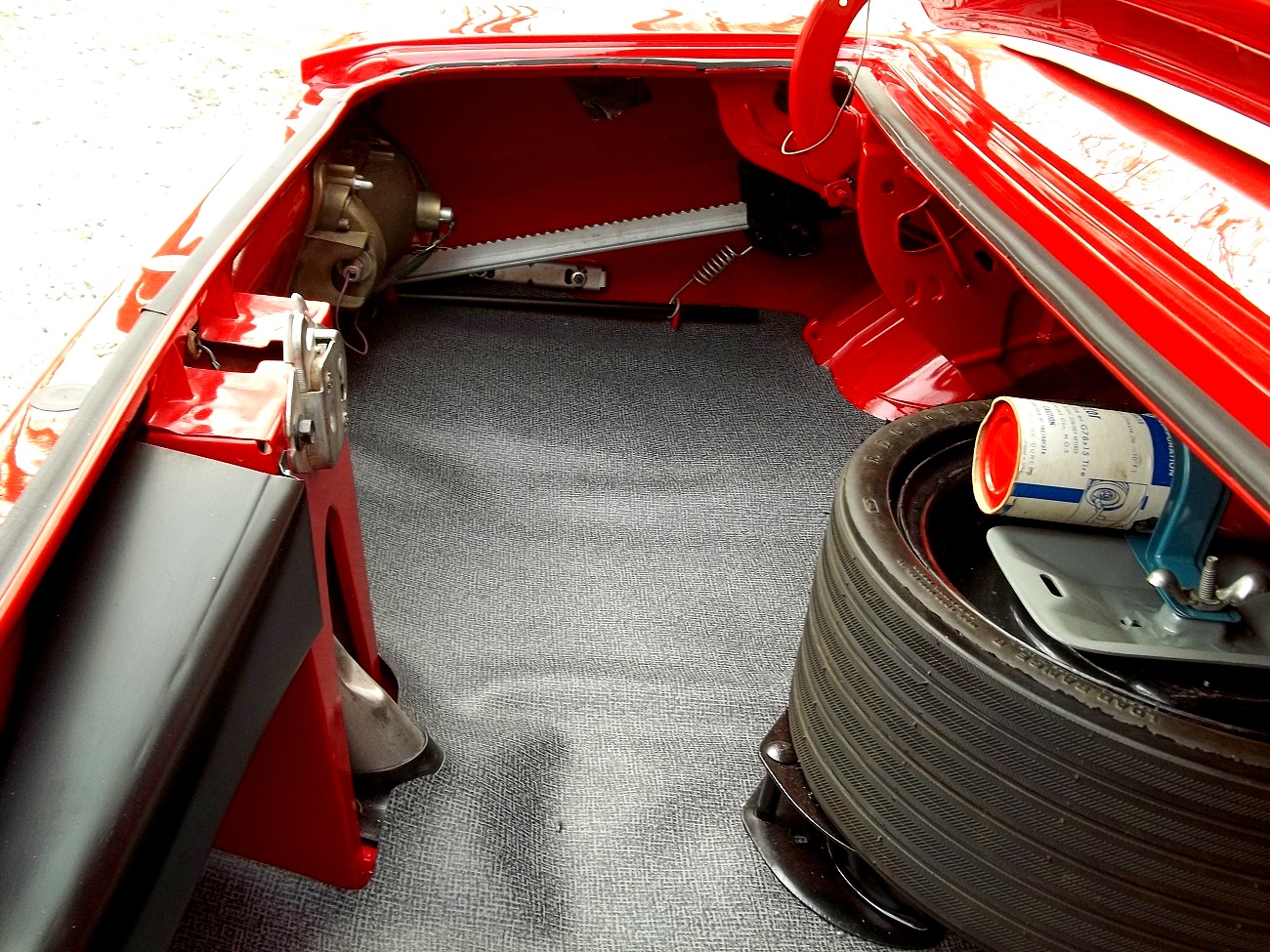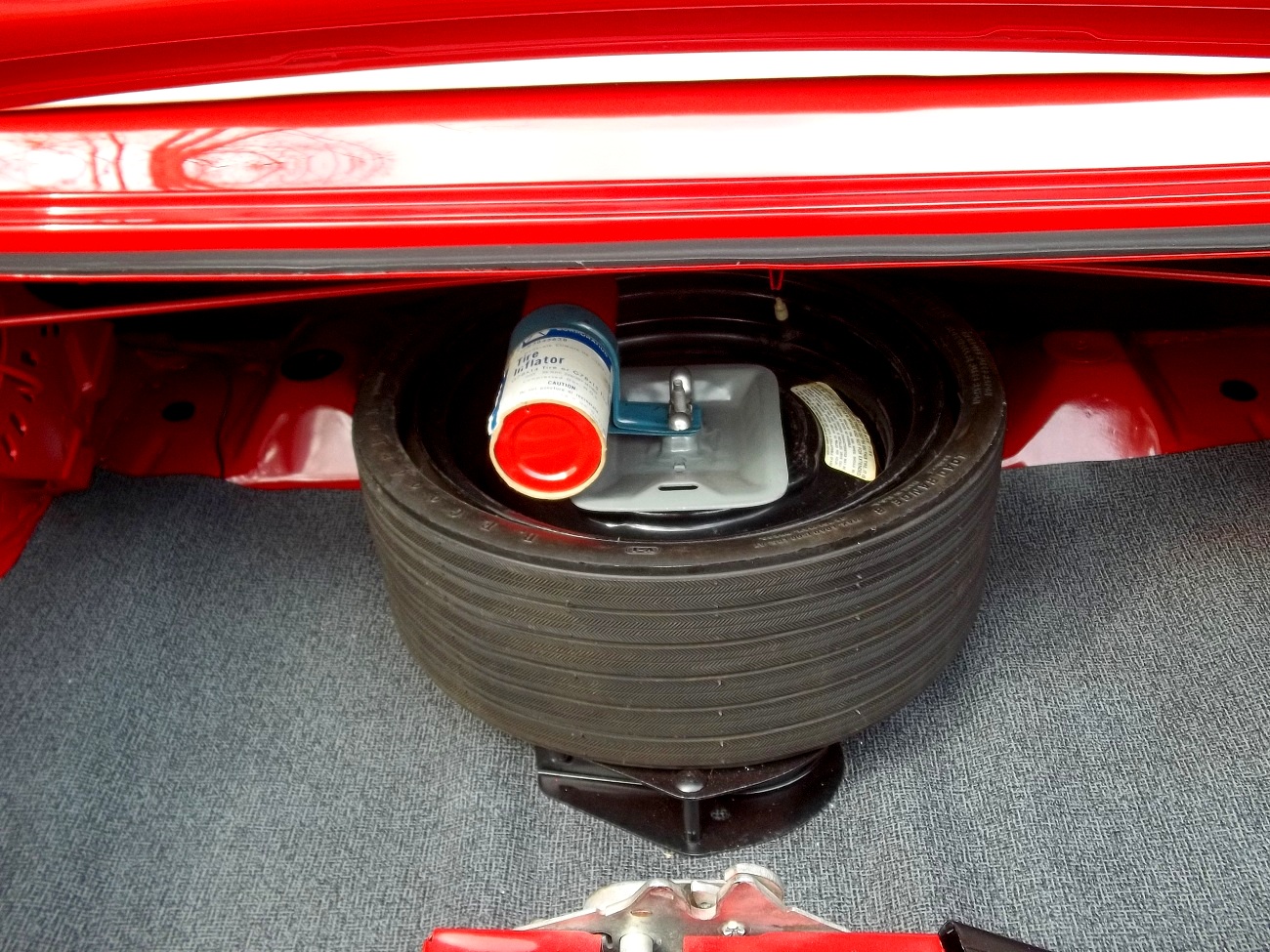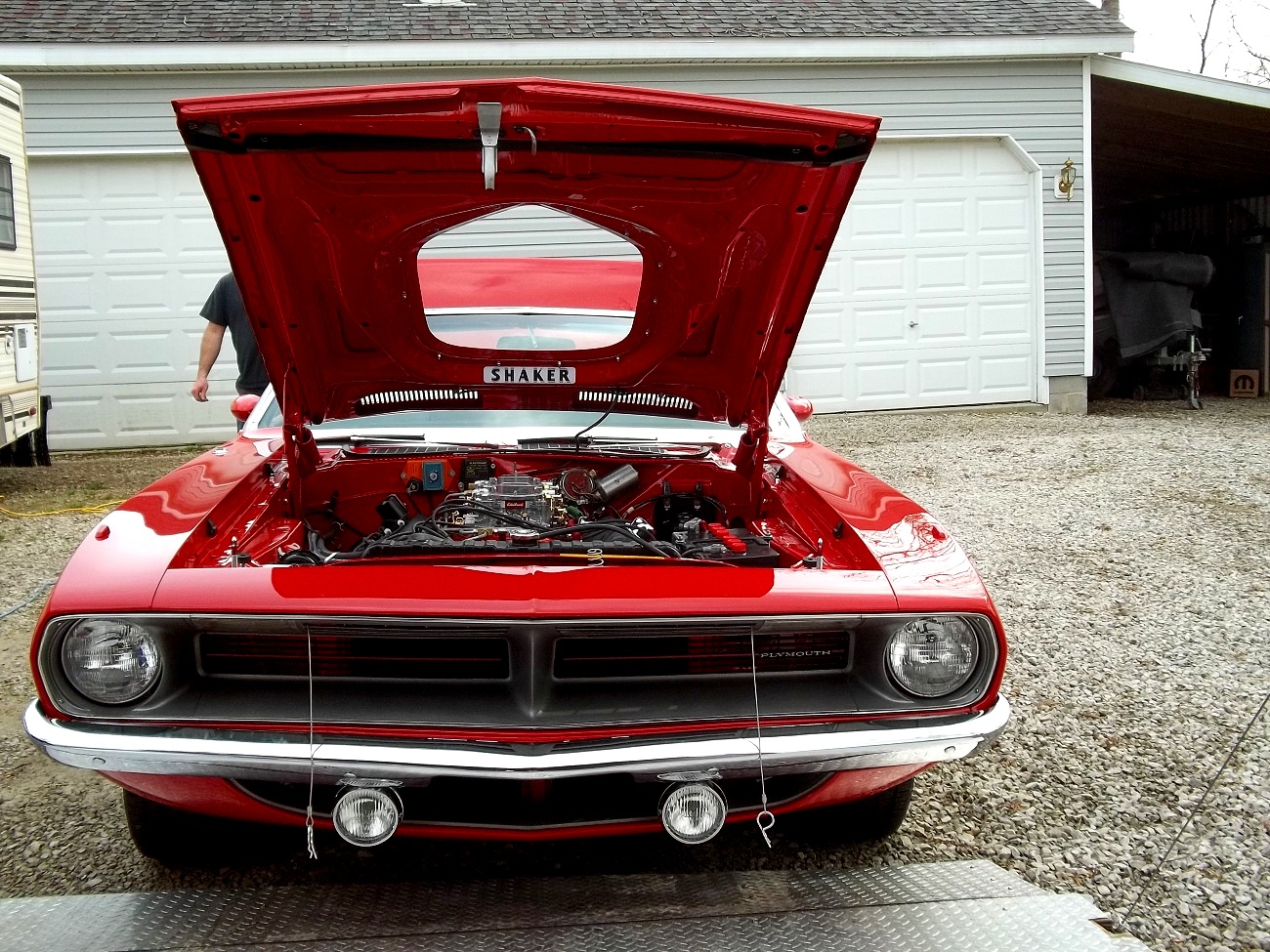1970 Plymouth Hemi Cuda Convertible NO 98
Complete Nut & Bolt Restoration - COMPLETE
Engine: 426cid Hemi Edelbrock Carbs A727 Torqueflite automatic trans
White Bucket Seat Interior - BRAND NEW Console – NEW
Incredible Bright Red Exterior - FRESH & AWESOME
Blackwall Radial Tires Factory Rally Wheels Factory Road Lamps
Shaker Hood Hood Pins Dual Sport Mirrors
Gauges Chrome Wheel Lips Zip-Out Rear Window
New White Convertible Top
Trunk Mat
Spare Tire, Jack & Air Canister
This car originally had a 318 motor, upgraded and supports installed to handle a 426 Hemi
1ST PLACE IN CLASS AT DETROIT AUTO SHOW 2012
Chrysler and the Hemi Engine - Adapted from Chrysler Corp and Engineering
Chrysler developed their first experimental hemi engine during WWII for the Republic P-47 Thunderbolt fighter aircraft. The XIV-2220 engine was an inverted V16 rated at 2,500 hp (1,860 kW). The P-47 was already in production with a Pratt & Whitney radial engine when the XIV-2220 flew successfully in trials in 1945 as a possible upgrade, but the war was winding down and it did not go into production. However, the exercise gave Chrysler engineers valuable research and development experience with two-valve hemi combustion chamber dynamics and parameters.
In addition to the aircraft engine, Chrysler and Continental worked together to develop the air-cooled AV-1790-5B V12 Hemi engine used in the M47 Patton tank.
1st Generation of Chrylser Hemi’s – 1951 through 1958
Chrysler applied their military experience with the hemispherical combustion chamber to their first overhead-valve V8 engine, released under the name FirePower, not "Hemi," in 1950 for the 1951 model year. The first version of the FirePower engine had a displacement of 331 cu in (5.4 L) and produced 180 bhp (134.2 kW). Eventually, three of the four Chrysler divisions had its own versions of the FirePower engine, with different displacements and designations, and having almost no parts in common. The Hemi in the 1958 Chrysler 300D was rated at 175 bhp.
2nd Generation Hemi’s – 1964 through 1971
The hemispherical head design was revived in 1964. These were the first engines officially designated Hemi, a name Chrysler had trademarked. Chrysler Hemi engines of this generation displaced 426 cu in (7.0 L). Just 11,000 Hemi engines were ultimately produced for consumer sale due to their relatively high cost and the sheer size of the engine bay required to fit it in. The 426 Hemi was nicknamed the "elephant engine"[13] at the time, a reference to its high power, heavy weight and large physical dimensions. Its 10.72 in (272.3 mm) deck height and 4.80 in (121.9 mm) bore spacing made it the biggest engine in racing at the time.
The 426 Hemi, in "street Hemi" form, was produced for consumer automobiles from 1965 through 1971. There were many differences between the Hemi and the Wedge-head big-block, including main cross-bolted bearingcaps and a different head bolt pattern. There were also many differences between the racing Hemi's and the street Hemi, including but not limited to compression ratio, camshaft, intake manifold, exhaust manifold. Some 1960s NASCAR and NHRA Hemi engines featured magnesium cross-ram intake manifolds and magnesium oil pans in an attempt to reduce the massive weight of the overall engine, along with chain-driven internal dry sump oil systems. Today, aftermarket blocks, heads, intakes, rods and pistons are usually made of aluminum.
The street Hemi version was rated at 425 bhp (431 PS; 317 kW) at 5000 rpm SAE gross and 490 lb⋅ft (664 N⋅m) at 4000 rpm of torque equipped with a pair of four-barrel Carter AFB carburetors.[14] In actual dynamometer testing, it produced 433.5 hp (323 kW; 440 PS) and 472 lb⋅ft (640 N⋅m) of torque in purely stock form
Third Generation Hemi: Trademarked – 2003 to Present
The current-production "HEMI" engine heads are flatter and more complex than the 1950s–'70s Hemi V8 chamber. The combustion chambers are no longer truly hemispherical. It uses a coil-on-plug distributorless ignition system and two spark plugs per cylinder to shorten flame travel leading to more consistent combustion and reduced emissions. Like most of Chrysler's past-model Hemi-head engines, the 5.7 version is rated at approximately one horsepower per cubic inch (the current engines are SAE net, whereas the old Hemi engines were rated SAE gross). For the 2009 model year power was increased to 357-395 horsepower (266-291 kW) and 389-410 lb·ft (527-556 N·m) depending on application. It also achieved 4% better fuel economy. Variable valve timing (VVT) was also introduced.

